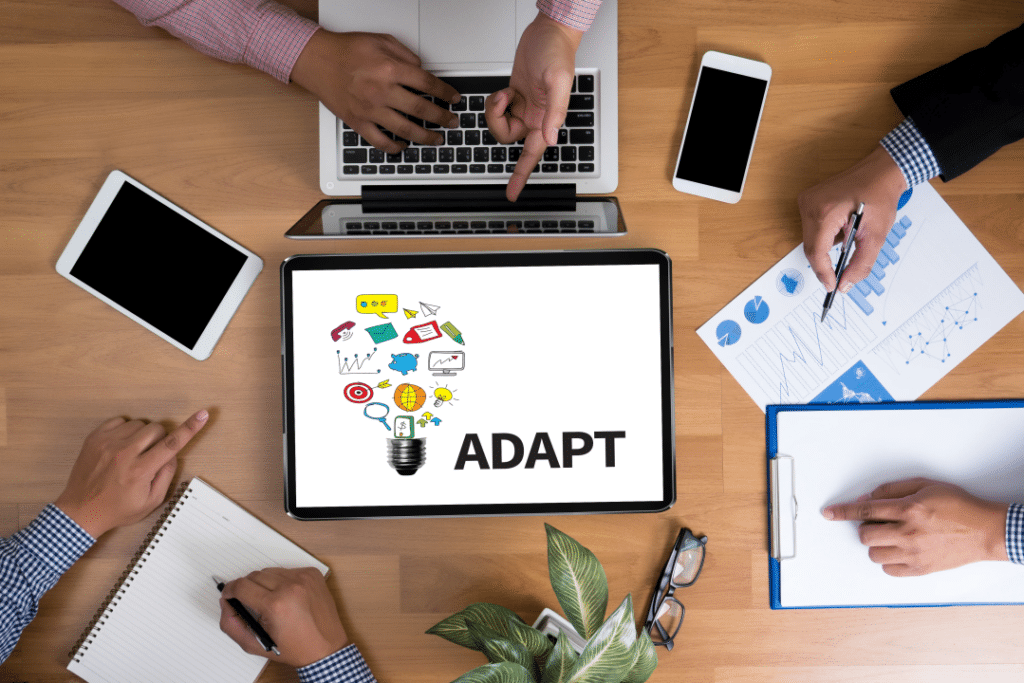Adaptability has become a strategic imperative for companies in today’s dynamic business environment. With continuous disruption and evolving business models, organizations must develop adaptive strategies to thrive. This article explores the importance of adaptability, how to build adaptive strategies, and the key steps to implement them.
Why is Adaptability a Strategic Imperative for Companies?
Understanding the Importance of Adaptability in Today’s Business Environment
In the face of rapid technological advancements and market shifts, adaptability has emerged as a critical factor for organizational success. Companies that embrace change and react swiftly are better positioned to navigate the complexities of the modern business landscape. This mindset allows them to identify new opportunities, anticipate challenges, and execute actionable insights.
How Can Companies Build Adaptive Strategies?
To become more adaptable, organizations must undergo a strategic shift in their approach to planning and execution. An adaptive strategy involves incorporating flexibility into the traditional planning process, enabling the enterprise to respond effectively to changes in the market and competitive landscape. This strategic shift requires a keen understanding of the business environment and the ability to identify and capitalize on emerging trends.
What Are the Key Building Blocks of an Adaptive Strategy?
An adaptive strategy encompasses the development of a mindset that values change as an opportunity rather than a threat. This requires a shift in the organization’s culture and the implementation of initiatives to foster adaptability at all levels. Additionally, leveraging platforms like LinkedIn provides valuable insights into the strategies adopted by other companies, offering a rich source of knowledge to inform the organization’s adaptive planning.
How to Develop a Strategic Plan for Organizational Adaptability?
Identifying Key Areas for Adaptability in the Organization
Developing a strategic plan for adaptability begins with identifying the areas within the organization that are most prone to disruption. This involves a comprehensive assessment of the business processes, technological infrastructure, and workforce capabilities to determine the potential impact of disruptive forces and the degree of adaptive planning required.
Implementing Initiatives to Accelerate Organizational Adaptability
Organizations can accelerate their adaptive planning by investing in leadership training and employee engagement initiatives. Bizhaven offers online leadership training help equip leaders with the skills and knowledge required to drive the organization’s strategic shift towards adaptability. Additionally, creating a culture that values innovation and change fosters an environment where employees are encouraged to embrace new ideas and approaches.
Exploring Topics Related to Building an Adaptive Strategy
Research on the future of work and business models offers valuable insights into the evolving nature of the business landscape. By understanding the trends and disruptions highlighted by this research, companies can refine their strategic planning process to align with the changing dynamics of the enterprise environment.
What Are the Key Steps to Implement an Adaptive Strategy?
Creating a Culture of Adaptability within the Organization
The implementation of an adaptive strategy necessitates a cultural shift within the organization. This involves instilling a mindset that values adaptability, innovation, and continuous learning. By promoting a culture that encourages experimentation and risk-taking, companies can foster an environment where new ideas can flourish, and adaptive strategies can take shape.
Utilizing LinkedIn and Other Platforms to Explore Adaptive Strategies
Platforms like LinkedIn offer a wealth of information on how other organizations are approaching adaptive planning. By leveraging these insights, companies can gain a deeper understanding of the strategies and initiatives that have proven successful in navigating disruptive forces. This, in turn, informs the organization’s own approach to adaptive strategy development.
Understanding How Others Also Viewed Adaptive Strategy and Its Importance
By gaining insights into how other enterprises view adaptive strategy and its significance, companies can refine their own approach and learn from the experiences of others. This collaborative approach to understanding and implementing adaptive strategies strengthens the organization’s ability to adapt to change and remain competitive in a dynamic business environment.
To summarize here is a list of 10 key components that will help a company’s adaptability.
- Inspire a Culture of Change:
- Embrace Cross-Functional Collaboration:
- Establish Agile Work Processes:
- Encourage Experimentation:
- Prioritize Continuous Learning:
- Promote Open Communication:
- Implement Flexible Work Arrangements:
- Invest in Employee Resilience:
- Incorporate Adaptable Leadership:
- Evaluate and Iterate:



